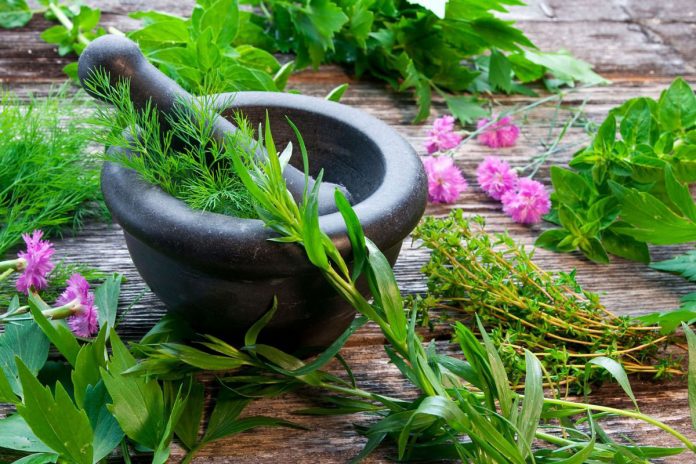When in pain, you need immediate relief. But pain medicines have side effects you may want to avoid, and now we may face drug shortages. One solution I’ve found is using pain relief herbs.
Most people are unaware of the pain-relieving quality of herbs readily available around the U.S. Perhaps most of these grow near you.
Knowing which herbs to use and how to use them, you have a free pharmacy growing nearby.
If you have no available source for these herbs, consider asking friends and neighbors to share the seeds with you or enter an online seed swapping community.
You’ll soon have a therapeutic garden that is safe to relieve any kind of pain.
The best herb to use for pain depends on your pain level. I grouped these herbs into categories accordingly. Remember that certain herbs fall into several groups , making them more important to you depending on your needs.
General Pain Relief
1. White Willow Bark

White willow bark is popular as a natural treatment for pain and inflammation. This contains an aspirin-like compound called salicin, effective in alleviating most forms of pain.
Particularly useful for treating headaches, back pain, joint pain, arthritis, and muscle aches.
The white willow tree’s bark, leaves and burnt log ash are used medicinally. A simple way to alleviate pain with white willow is to make a tea from the bark or leaves.
White Willow Tea
To make 2 cups, you will need: 3 to 4 teaspoons of crumbled white willow bark or dried leaves, 1 cinnamon stick, honey as desired and 2 cups of water.
- Boil the white bark for 5-10 minutes.
- Add the cinnamon, turn off and cover the pot. Steep for 20-30 minutes.
- To remove bark and cinnamon stick, strain the tea through a coffee filter or mesh strainer.
- Add honey, if desired.
- Drink up to 4 cups of tea to ease pain. Pain relief is long-lasting.
2. Wild Lettuce

Wild lettuce is often called lettuce opium because it has weak, opium-like effects. Used in small doses, it is both a very effective pain reliever and sedative. It does not cause opium-related high.
Wild lettuce or tea is an excellent general pain reliever for muscle pain, joint pain, and back pain.
Wild Lettuce Tincture
You’ll need vodka, brandy, rum or whiskey, 80 proof – or quality apple cider vinegar and fresh or dried wild lettuce leaves.
- Fill a clean, sterile glass jar with chopped fresh leaves or use 2 ounces of dried wild lettuce per cup of alcohol or vinegar.
- Cover herbs with vodka or other drinkable alcohol or vinegar.
- Stir herbs to remove bubbles.
- Move the jar to a calm, dark position and let the tincture steep for 2-4 weeks, shaking regularly.
- Strain and discard herbs. Place in a cool , dark place for up to 5 years.
- Use 2-4 ml tincture three times a day, as needed.
3. St. John’s Wort
Did you know that St. John’s Wort relieves painful joint symptoms and decreases the discomfort which causes the inflammation? Taking the herb regularly produces best results.
Inflammation calms over time, and the joint heals. This also treats muscle pain, back pain, and body aches. Take St. John’s Wort internally or massage the oil into the muscles.
St. John’s Wort is known for its ability to alleviate nerve pain and neuralgia when applied to the sore area’s skin. This treats acute neuralgia, sciatica, and shingles.
St. John’s Wort Tea
To prepare St. John’s Wort tea, place 1 dried herb teaspoon or 1 tablespoon fresh herb in a cup of boiling water. Cover and let it steep for 8-10 minutes.
Strain the herb, add sugar, honey or lemon as desired. Drink one-to-two cups of tea with a meal.
Related: All-Natural, Home Remedies for High Blood Pressure
4. Yarrow Root
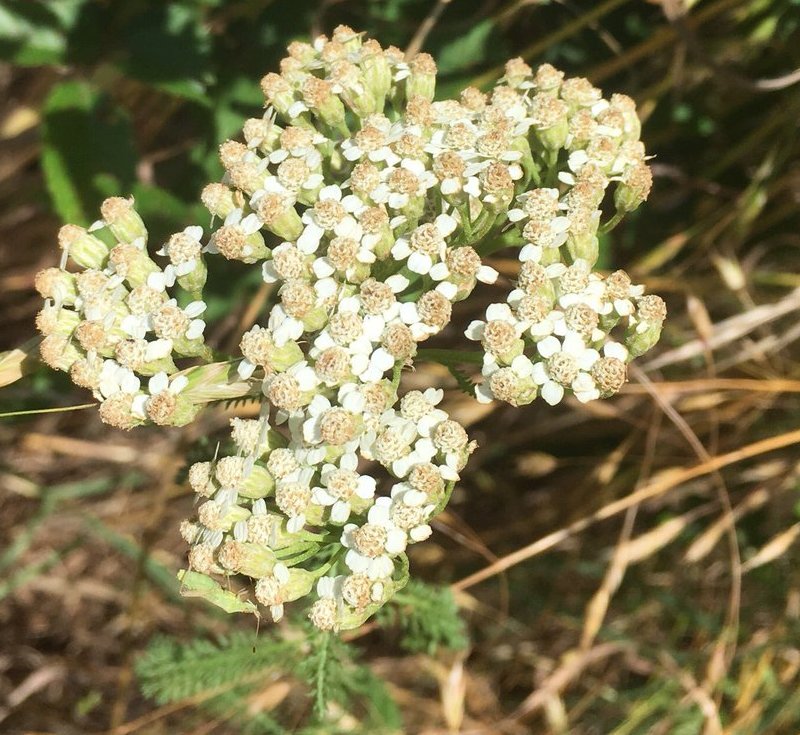
Yarrow contains salicylic acid, which quickly relieves pain. Use yarrow leaf tea to alleviate general pains.
Salicylic acid is a pain reliever in aspirin.
Yarrow Tea
Add 1 teaspoon dried yarrow leaves to 1 cup of boiling water. Steep 3-6 minutes.
Joint Pain, Arthritis, Osteoarthritis
5. Chicory

Chicory root is a traditional arthritis pain medication. It contains anti-inflammatory properties that reduce arthritis and osteoarthritis pain.
It can also be used for muscle aches, pains, and joint soreness.
Chicory Roasted Root
Brew roasted chicory root and drink as coffee. Some people use half-coffee and half-chicory root. For inflammatory conditions, add chicory turmeric for additional anti-inflammatory benefits.
Related: 26 Ancient Remedies That We Should Revive from History
6. Chickweed

Chickweed, taken as tea or tint, is an effective remedy for joint pain and arthritis. This also relieves the inflammation. Also, useful in a bath or soaking water for knee and foot pain.
Chickweed Tea
Make a traditional tea with 1 teaspoon or 1 tablespoon of fresh chopped chickweed. Pour 1 cup of boiling water over the leaves and cover for 10-15 minutes. Consume the entire cup for pain relief.
7. Cayenne for Achy Muscles and Joints
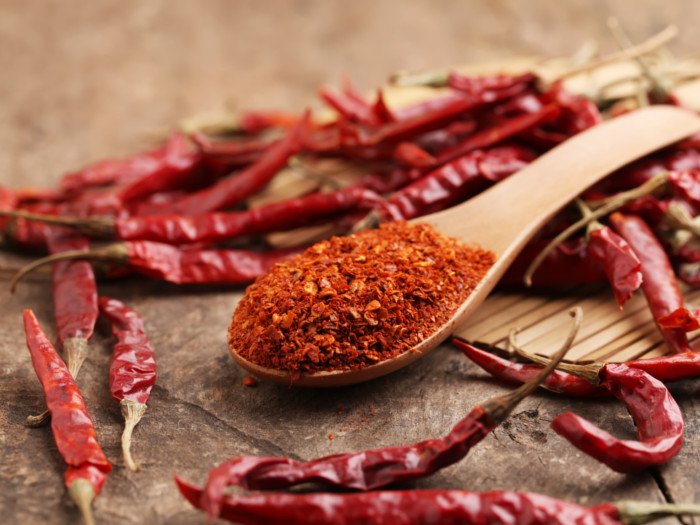
Capsaicin, an ingredient in many arthritis and muscle pain remedies, is derived from hot peppers like cayenne. Over time, capsaicin depletes a compound that transmits the pain sensation to the central nervous system.
Use cayenne in salves or oils to massage achy muscles and joints. The pepper also increases blood circulation to the area, warming it and relaxing the muscles.
A small amount regularly used over achy muscles, and painful joints will relieve pain and reduce inflammation. Maximum results are felt within a few days of regular use.
Cayenne Massage Oil for Painful Muscles and Joints
Cayenne oil contains capsaicin which causes a sensation of burning. Test your oil on a small patch of skin before applying generously. Dilute the oil, if necessary, with more oil until a comfortable burn is felt.
Other peppers can be used but will create a different degree of burn, so always test first. You’ll need: 2 tablespoons dried cayenne pepper and 1/2 cup coconut or olive oil.
- Heat the oil over low heat (approximately 100 F) for 10 days, stirring daily. I use a potpourri warmer pot for this.
- Let the oil settle overnight before carefully decanting the clear oil off the top leaving the pepper behind.
- For an Icy—Hot oil, add peppermint essential oil to the cayenne oil before use.
Related: 9 Natural Remedies for Faster Wound Healing
8. Peppermint
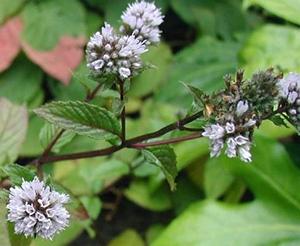
Peppermint oil relieves muscle aches, joint pains, gout pain, and nerve pain. Warm the peppermint leaves in oil to release the beneficial oils, then strain the herb.
Massage the extracted peppermint oil over joint pain and nerve pain in the sore muscles or skin. It doesn’t treat pain’s underlying causes, but it does a quick job of relieving pain.
Peppermint Tea
Ingredients: 7-10 fresh peppermint leaves or 1 teaspoon of dried peppermint, 1 cup of boiling water and honey, milk, or lemon to taste.
- Crush the leaves or crumble the dried herbs.
- Remove the boiling water from the heat and allow to cool slightly. Pour the hot water over the tea leaves.
- Let tea steep 7-12 minutes. Stir in honey, lemon, or milk.
Related: Top 10 Emergency Home Remedies for Toothache Relief
9. Feverfew

Feverfew leaves and flowering heads reduce inflammation causing arthritis pain. The herb reduces pain when taken regularly. Take feverfew daily as tea or capsulate the ground leaves.
A poultice made of crushed feverfew leaves can be applied over the affective region which is suitable for localized joint pain or muscle pain. It relieves pain and calms the joint inflammation.
Crush some feverfew leaves (soak them when using dried leaves) and place them over the joint. Cover with a clean cloth in place.
10. Lavender for Muscle Pain, Backaches, and Arthritis Pain

A treatment with lavender oil calms the throbbing muscles, relieves back pain, and helps heal sprained or strained muscles. It’s also effective in relieving back muscles and back pain. Lavender includes analgesic substances to relieve muscle pain and injury.
Lavender Oil
You’ll need 3/4 container of dried lavender flowers, 1 container of coconut oil , olive oil, or grapeseed oil.
Slightly crumble or bruise the lavender. Place in a clean, tight-fitting container. Place lavender in a dry, sunny location for at least 48 hours, but preferably 3-6 weeks.
If you need oil faster, heat it gently in a double boiler or crock pot at low temperature (100 F to 120 F) for 2-5 hours. Strain the lavender and store in a cool, dark location.
Other Chronic Pain and Nerve Pain treatments: ginseng for fibromyalgia and valerian root soothes muscle spasms and cramps.
Other treatments: Lemon Verbena, Prickly Pear, Unicorn Root, Wild Strawberries, Slippery Elm, White Pine and Feverfew.
Stomach Pain, Digestive Pain, and Muscle Pain
11. Aloe Vera
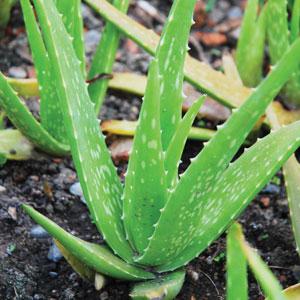
Aloe vera, taken with meals, decreases gastroesophageal reflux and heartburn pain. This also decreases bowel cramping and stomach pain.
Aloe Vera Gel
Aloe vera gel is the gelatinous fluid inside the aloe vera leaf. Split a leaf open and scoop the gel inside. Eat 2 tablespoons of gel on an empty stomach and before meals.
If desired, the gel can be mixed easily with water for easy consumption.
12. Chamomile for Muscle Pain and Digestive Pain

You probably had a cup of chamomile tea somewhere, but did you know it’s useful to treat digestive pain and muscle soreness? Chamomile tea relaxes muscles, relieving pain. It soothes body and muscle aches.
Digestive relaxation treat abdominal pain, indigestion, and gastritis. People with Crohn’s disease and irritable bowel syndrome may find that chamomile tea, taken 3-4 times a day, relieves most symptoms.
Chamomile Tea
Ingredients: 2 Tablespoons fresh Chamomile flowers, 2 cups hot water and honey, as desired.
- Rinse the flowers in cool water
- Heat 2 cups water to boiling and take off the heat. Cool slightly.
- Add the chamomile flowers, cover, and steep for 3 to 5 minutes.
- Strain the tea into 2 servings and sweeten with honey, as desired.
Related: 7 Chinese Herbal Remedies for Preppers
13. Dill Leaf
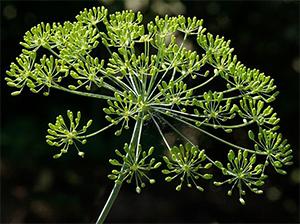
Dill Leaf Tea relieves muscle spasms and cramping, including stomach discomfort. Dill leaf tea provides acute relief for pain, but does not cure underlying disease. Dill seed infusion or tinting is also useful.
Dill Leaf Tea
You’ll need: 1 to 2 teaspoons of dried dill leaf and seeds, crushed and 1 cup of boiling water. Pour boiling water over herbs, allowing to steep for 10-20 minutes. Drink 1 cup after the day’s last meal.
Unsweetened tea is best for stomach problems, but honey or stevia can be added for heartburn or nausea.
Other Treatments for Abdominal Pain: Fennel, Leeks, Lemon verbena, Thyme, Bearberry, Bloodroot, Black cohosh, Kudzu, Bayberry, Black walnut, Chives and American Basswood tree.
Headaches
14. Feverfew
Feverfew is a remarkable treatment for migraine headaches. Taking it daily reduces headaches frequency and intensity. Take feverfew daily for better performance.
Chew 1-4 leaves or drink a cup of feverfew tea to prevent headache.
Feverfew Tea
Ingredients : 1 teaspoon of fresh feverfew leaves and 1 cup of boiling water. Pour boiling water over feverfew leaves and steep for 5 minutes. Filter herbs and enjoy warm.
Other Herbs for Headaches and Migraines: Sweet marjoram, Bottle gourd, Wintergreen, Yellow jessamine, Sassafras, Quaking aspen, White willow, California buckwheat, Watercress, Duckweed, Peppermint and Yarrow.
Related: 16 Remedies for Radiation Exposure
Tooth Pain
15. Clove Oil is Numbing for Skin and Nerve Pain
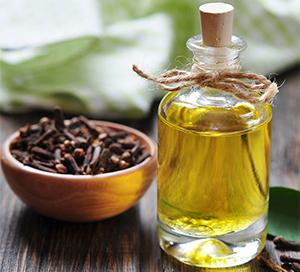
While clove oil will cost you several dollars, it’s a remarkable pain reliever. This acts by numbing the area, preventing pain. Dilute the oil before using it; it is naturally too strong.
You may also use clove oil to avoid any skin inflammation, cold sores, stings, and bites pain. The pain relief lasts hours, and you can reapply as needed.
16. Yarrow
Chewing a piece of fresh yarrow root or yarrow leaves reduces pain and inflammation of dental pain.
This is a brief summary of herbs used to relieve pain. There’s many more, and I’m sure you’ll find herbs growing near you in every category. Collect them from safe outlets, off highways, and highly traveled areas.
If you live in a densely populated place, you can collect and grow seeds from roadside plants in pots or herb garden.
Before using these herbs, you should always do your own research. Some have warnings for susceptible people, so analyzing them for your condition is always wise.


